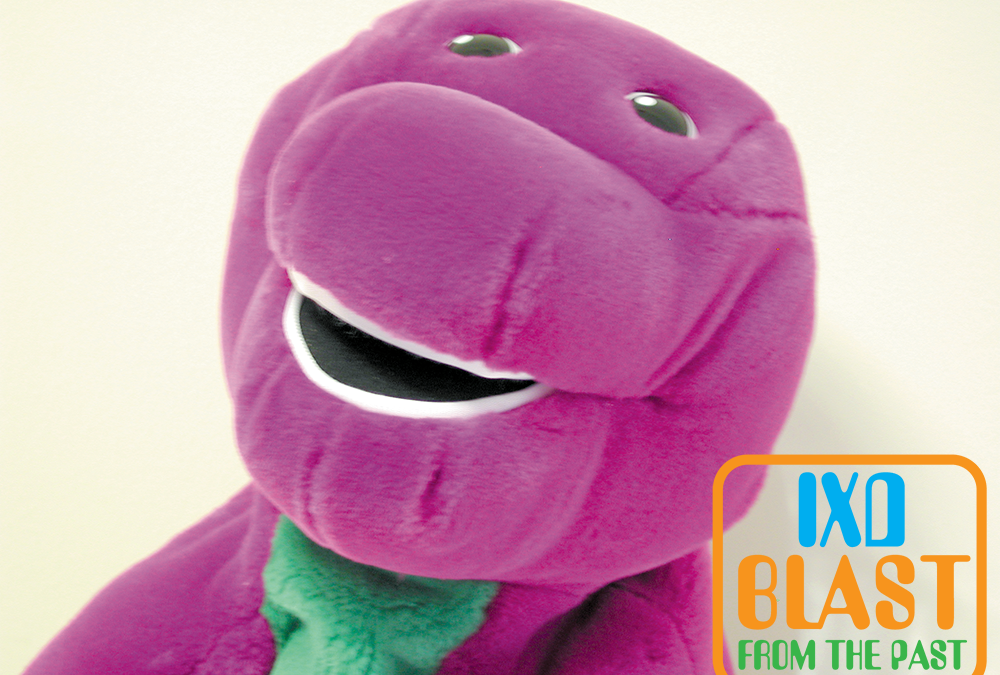The Microsoft ActiMates were the first stuffed animals (or plush toys) that interacted with children, both directly through physical contact as well as through the computer (when its CD-ROM was inserted), and the television. The result of these simple, yet prophetic features is that a magical character seems so responsive that it’s hard for children not to regard it as alive—at least in some way.
There were eventually seven ActiMates released (Barney, Arthur and his sister D.W., and the four Teletubbies) but all were discontinued in 2000. The first 3 were characters from the Public Broadcasting System in the USA and the remaining four were from the British Broadcasting Company.
The Barney ActiMates satisfy many of the characteristics that make a device seem interactive. It is very responsive—especially to touch (like squeezing its hands or covering its eyes)—and it can be used to play games and sing both alone and in conjunction with the CD-ROM or television. What’s truly remarkable is that the ActiMates seem more aware of their surroundings than other toys. Via a wireless transmitter and receiver, it can tell which part of the CD-ROM game is active and sing along with kids perfectly in sync, as well as play along with the games as an independent player.
Today, an obvious addition would be conversational and generative AI (assuming the device had access to a network). But, the fundamental interactions already present in these nearly 30 year old devices was prescient. These devices responded to specific touch and audio, interacted with television and computers, but never required these technologies to still be interactive with children alone.
Experience Design 1.2: pages 144-145

Recent Comments